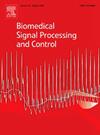TSMNet: A comprehensive network based on spatio-temporal representations for SSVEP classification
IF 4.9
2区 医学
Q1 ENGINEERING, BIOMEDICAL
引用次数: 0
Abstract
Steady-state visual evoked potentials (SSVEP) contributes to the brain’s interaction with external devices due to its advantages of high signal-to-noise ratio and information transmission rate. From the shape of the electroencephalogram (EEG) signals shows an irregular distribution, the current SSVEP deep learning methods have not represent the spatial topology patterns of EEG signals well, thus urgent need for further improvements in extracting spatial features. To this end, we propose a comprehensive network called TSMNet, combining a temporal feature extractor and a spatial topology converter for SSVEP classification. Specifically, the temporal feature extractor constructs a Temporal-conv block to filter the temporal-domain noise to capture pure high-order temporal-dependent representations. The spatial topology converter models the multi-channel representations in EEG signals and dynamically updates the shape of the topology, thus effectively capturing high-order spatial topology representations. We further develop a multigraph subspace module for multi-space mapping of the output of the spatial topology converter. This paper evaluates TSMNet on two SSVEP open datasets with time windows of 0.5s and 1.0s and compares with the state-of-the-art methods based on inter-subject and intra-subject experiments. The experimental results show that TSMNet has significant advantages in performance, it achieves an accuracy improvement of 2.04% and 1.47%. Attractively, this end-to-end framework not only eliminates the time-consuming manual feature engineering process but also speeds up the implementation of practical applications.
求助全文
约1分钟内获得全文
求助全文
来源期刊

Biomedical Signal Processing and Control
工程技术-工程:生物医学
CiteScore
9.80
自引率
13.70%
发文量
822
审稿时长
4 months
期刊介绍:
Biomedical Signal Processing and Control aims to provide a cross-disciplinary international forum for the interchange of information on research in the measurement and analysis of signals and images in clinical medicine and the biological sciences. Emphasis is placed on contributions dealing with the practical, applications-led research on the use of methods and devices in clinical diagnosis, patient monitoring and management.
Biomedical Signal Processing and Control reflects the main areas in which these methods are being used and developed at the interface of both engineering and clinical science. The scope of the journal is defined to include relevant review papers, technical notes, short communications and letters. Tutorial papers and special issues will also be published.
 求助内容:
求助内容: 应助结果提醒方式:
应助结果提醒方式:


